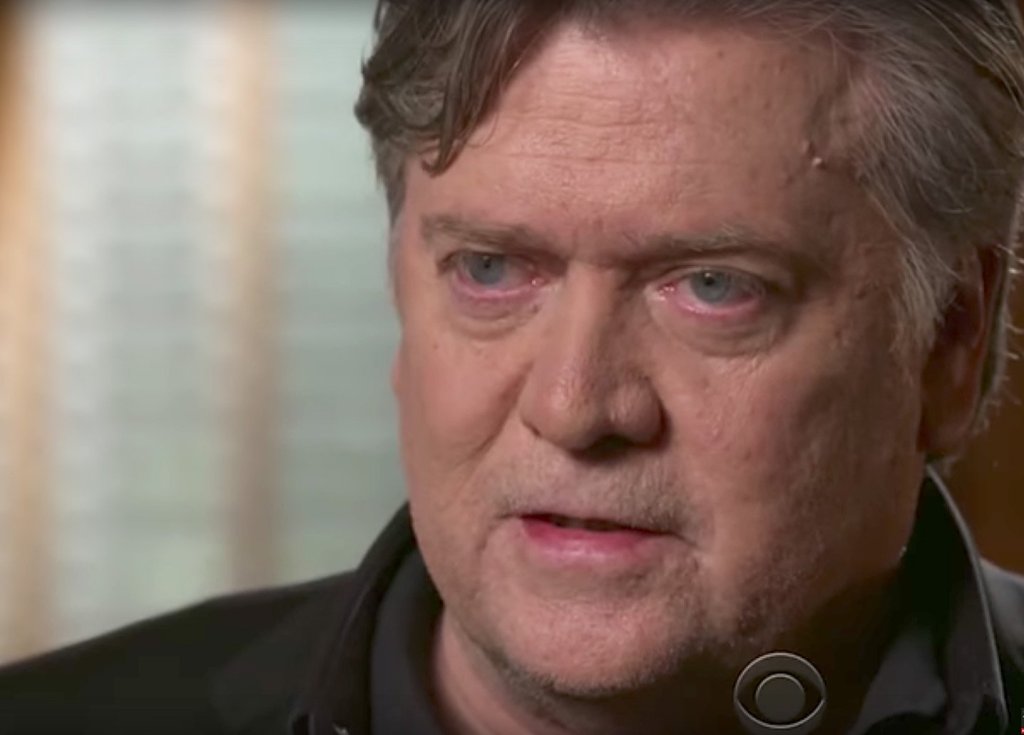Former White House strategist Steve Bannon has not followed the typical mode of departure for an aid ejected from the West Wing. Usually, when a staffer leaves 1600 Pennsylvania Ave., they’re quiet for a while afterwards — and the explanation is almost always that they “resign” rather than being fired.
Then, when they do begin to re-emerge into the public view, they stand solidly by their former boss, regardless of the circumstances of their own dismissal or whether he is deserving of such loyalty.
We’ve seen former White House staffers Reince Preibus and Sean Spicer largely stick to this script. Or, at least, we did until Spicer’s sudden appearance on the Emmys last week — though, given the show’s ratings this year, they might actually still be considered fairly low profile.
Bannon, on the other hand, has not gone gently into that good night. Less than a month after his departure, he made a major appearance on “60 Minutes” for a lengthy interview. There, he spent much of the time attacking not the Democrats, but the Republican Party. Now, it’s no shock that Bannon would have plenty of ire at GOP congressional leadership, who were slow to embrace Trump as the nominee and were often — at best — lukewarm about many elements of his agenda.
No, what was most surprising about Bannon’s interview wasn’t that he criticized Republicans, but also that he went after President Donald Trump on several issues.
He criticized Trump’s decision to give Congress a chance to fix the Deferred Action for Childhood Arrivals (DACA) program, rather than simply ending it immediately. Instead, he made it clear that he preferred to have no compromise whatsoever on the immigration issue. He also slammed Trump’s firing of FBI Director James Comey, correctly pointing out that it directly led to the appointment of Robert Mueller as special counsel.
Bannon’s disagreement with GOP leadership and the White House hasn’t just been in a war of words, however. He’s taking this fight directly to the voters in the Alabama special election, embracing the arch-conservative Roy Moore against Luther Strange, who was appointed to fill the seat after Jeff Sessions became attorney general.
Moore, you may recall, was removed as chief justice of the Alabama Supreme Court after he refused to take down a monument to the Ten Commandments.
To nobody’s surprise, Mitch McConnell has supported Strange. What is slightly more surprising is that McConnell also managed to convince Trump to not only endorse Strange, but to visit the state and campaign with him a few days before voters head to the polls.
The importance of the special election in Alabama cannot be understated, as it represents the first solo test of Bannon versus the Republican establishment. If Moore is successful, it could set off a wave of primary challenges across the country that could put the GOP’s House and Senate majorities in peril. Bannon may well say that he’s recruiting candidates who are loyal to Trump, but really he wants candidates who will embrace his own political vision, as Trump did.
As always, of course, the real question is where Trump really stands in all of this. Given how quick he is to attack people, one would assume that Bannon’s post-White House criticism of him would draw Trump’s ire — but he hasn’t gone after his former aide. That might suggest that Bannon really isn’t being a total free agent in either his criticism of Trump or his support of Moore, but instead is breaking with certain elements of the administration rather than with Trump himself.
This would be in keeping with Trump’s management philosophy of having dueling power structures within his organization. This was reflected in his initial appointments of Bannon as chief strategist and Preibus as chief of staff, an arrangement that didn’t last long.
Now, on the surface, it would appear that the new chief of staff, John Kelly, is putting together a more traditionally organized administration. However, it may be that, far from actually severing ties with Bannon, Trump merely relocated him, moving one power structure outside of the West Wing (and away from the public eye) for the moment.
This would also give Trump more flexibility going forward: If Congress can get his policies enacted, he can completely cut Bannon loose; if they don’t, he can embrace Bannon’s anti-incumbent movement.
Between the Alabama run-off and the ticking clock on Obamacare repeal, the next few weeks may well determine which course he chooses — and the outcome of the midterm elections.
Jim Fossel, a conservative activist from Gardiner, worked for Sen. Susan Collins. He can be contacted at: jwfossel@gmail.com
Send questions/comments to the editors.


